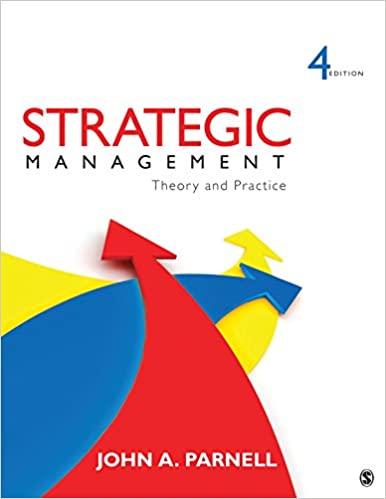Question
Plutonium was an Internet start-up company founded in 1988 at the beginning of the technology boom. One of the largest problems for Plutonium was developing
Plutonium was an Internet start-up company founded in 1988 at the beginning of the technology boom. One of the largest problems for Plutonium was developing the technological systems necessary to support the rapidly expanding user base. Furthermore, due to the rapid expansion in recent years, many of its systems had been added hastily, resulting in poor integration and eroding data integrity. As a result, the CEO of Plutonium announced an initiative to integrate all systems and increase the quality of internal data. In compliance with this initiative, Plutonium purchased an expensive and complex billing system called Gateway, which would automate the billing for thousands of Internet accounts via credit cards.
During the integration, Gateway, in collaboration with Visa, created a phony credit card number that could be used by developers and programmers to test the functionality and integration of the Gateway system. Moreover, this credit card number was fully functional in "live" environments so testers and developers could ensure functionality without being required to use actual personal or company credit card numbers. The activity on this card was not monitored. The integration went smoothly; however, it created thousands of corrupt accounts that required fixing.
Jonathan, the manager of the Operations Department, was responsible for the resolution of all data integrity issues. His team was tasked with fixing all corrupt accounts created by the launch and integration of the Gateway system. As a result, Jonathan was given the phony credit card number, which was kept on a Post-it Note in his drawer.
One of the top performers on the Operations team was a 29-year-old male named Chris. Chris had worked in Operations for more than a year and was making $15 per hour, the same salary as when he was hired. He was an introvert working to support a family and put himself through school. Chris was the most technologically savvy individual on the team, and his overall systems knowledge exceeded that of his manager, Jonathan. Chris was brilliant in creating more efficient tools and methods to repair corrupted accounts. Therefore, Chris was tasked with conducting training for new employees and updating team members on new processes and tools that he had created. As a result, he quickly became a trusted and valuable team member. Jonathan gave him, and the other team members, the phony credit card number to increase the productivity of the team.
However, after six months of working at Plutonium, Chris received an official reprimand from the company for using the company system to access Web sites containing pirated software and music. The FBI attended the investigation and determined that Chris had not been a major player in the piracy. Therefore, Chris was quietly warned and placed on a short-term probation. Jonathan was asked to write warning letter for the action; however, after a brief conversation with Chris, Jonathan determined that Chris's intentions were good and never officially submitted the letter because Chris was a trusted employee and elevated the overall performance of the team.
A few months after the piracy incident, Jonathan noticed some changes in Chris's behavior:
- Chris's computer monitor was re-positioned so that his screen was not visible to coworkers.
- Chris had the latest technological innovations including a new smartphone, an MP3 player, a Play Station, a new laptop, a tablet, and a new car stereo system.
- Chris was going out to lunch more frequently.
- Chris frequently used multiple fake usernames and passwords for testing purposes.
Analyze this case using the three elements of the fraud triangle. Address the following five points in your response:
- What potential pressures exist that might cause Chris to commit fraud?
- What opportunities does Chris have for committing fraud?
- What are some rationalizations that Chris might have to excuse committing fraud?
- What are some of the symptoms suggesting that fraud might exist in this situation?
- What could Jonathan have done to eliminate some, or all, of the opportunities for fraud?
Please provide detailed explanation according to questions with key references
include a introduction page , conclusion summarizing your findings and recommendations
Step by Step Solution
There are 3 Steps involved in it
Step: 1

Get Instant Access to Expert-Tailored Solutions
See step-by-step solutions with expert insights and AI powered tools for academic success
Step: 2

Step: 3

Ace Your Homework with AI
Get the answers you need in no time with our AI-driven, step-by-step assistance
Get Started


